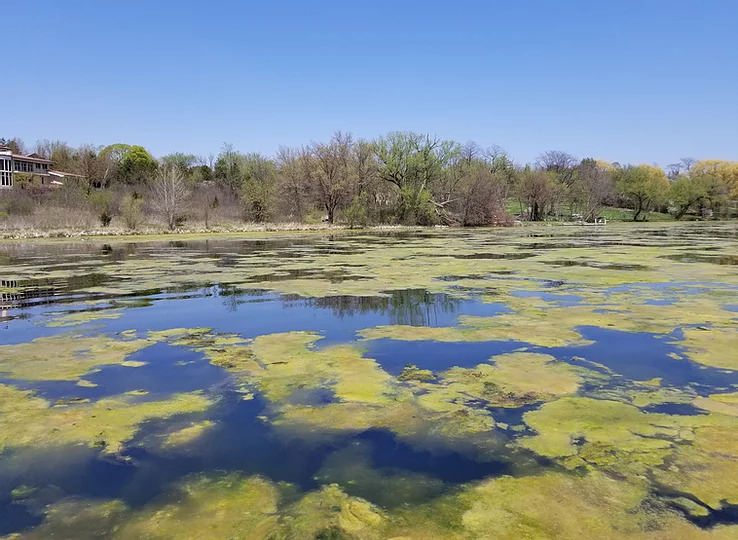
Algae comes in many forms and there are many varieties that are observed in the field by our Lake Management Specialists. Algae is mostly regarded as a type of nuisance vegetation with many different forms, all of which can overtake your water if left untreated. The most common algae that we see in Northern Illinois is primarily Filamentous, Hydrodictyon spp., Pithophora spp., Lyngbya spp., as well as planktonic algae and cyanobacteria blooms. Illinois waterways can get blue-green algae aka HABS (Harmful Algae Blooms). If you see blue-green algae, please notify McCloud Aquatics right away as there is a health risk associated with blue-green algae and HABS.
FACT: One pound of Phosphorus can support up to 500+ pounds of algae growth.
There is a reason why algae grows in your pond or lake; The primary reason for algae growth is an abundance of nutrients present in both the water column and the sediments or muck. Typically, nutrients in the form of phosphorus and nitrogen are the root cause of excessive algae growth. Often times we design our lake management programs with a focus on managing the nutrients that cause excessive vegetation growth. McCloud Aquatics recommends getting your water and sediment (muck) tested in order to develop a complete and thorough management plan. McCloud Aquatics also offers bathymetry mapping to see what is going on with the pond from the bottom up.
Most of our algae treatments are reactive measures to combat the growth which arises. However, there are some proactive algae solutions available.
Typically, each type of algae is able to be controlled using traditional copper-based products or other algaecide products such as oxidizers. At times algae can grow faster than we can provide treatment for. If excessive algae growth is a problem in your pond, it may be time to find out why.
My Pond Was Just Treated but I Still See Algae?
Our bi-weekly treatment schedule is optimal, as it allows the waterbody to recover between treatments to maintain a healthy state. Some bodies of water do need more frequent treatments due to excessive growth.
Each body of water behaves differently and therefore reacts to algae treatments somewhat differently. While our applications target and begin to kill algae as soon as they are applied, it generally takes 4-7 days before things really start to clear up. Smaller patches of algae may clear out faster than large mats which cover a significant portion of the water surface, and there are other factors such as weather or biological properties that also affect the decomposition process. You also may see that the algae experienced a color change to yellow or brown relatively quickly but remained on the water surface; No worries. The discoloration is a sign that things are working, and that decomposition is taking place! It is not uncommon for mass algae patches to need two or three treatments to clear up completely, and making lighter but more focused or concentrated treatments focusing on sections is a safer and more healthy practice for the aquatic ecosystem!
